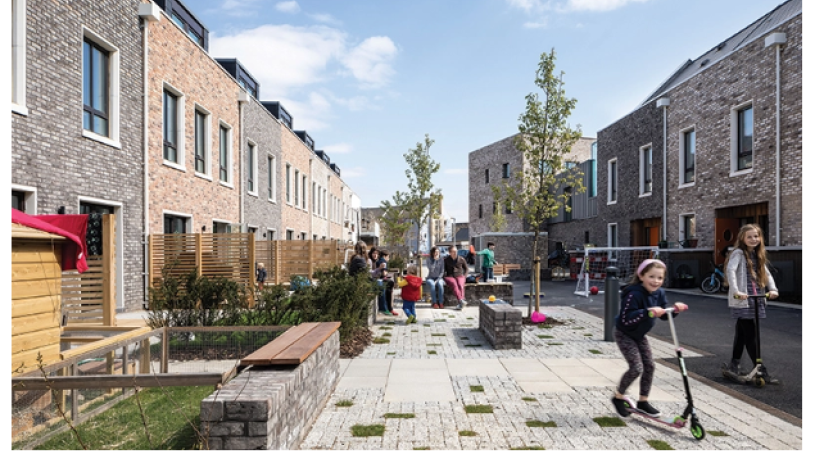Colleges, universities have role to play in solutions to housing crisis: report
All levels of government need to collaborate to get more housing built in Ontario, but that work also needs to include the post-secondary education sector, says a report published Thursday by a University of Ottawa-based think tank.
The Smart Prosperity Institute report, says the provincial government’s goal of building 1.5 million homes in 10 years is a good target, even if it will be “exceptionally difficult” to get there.
“Ontario has not built 750,000 homes, half of what is needed, in any ten-year period since 1973-82, when new episodes of the television (show) M*A*S*H were being aired,” the report says.
“In fact, Ontario has never built more than 850,000 new homes in any ten-year period. Ever. In short, Ontario must do something it has not done in over forty years, then double it.”
Report author Mike Moffatt said he still believes the target can be achieved, but it will take a huge joint effort from government and other sectors.
“We’re certainly not on pace,” he said in a media briefing on the report.
“I think the latest data I saw, depending on whether or not you measure by starts or completions, we’re running at about 58 per cent. So we’ve got a long, long way to go. I think we can get there and I think it’s going to take a lot of co-operation from all three orders of government.”
The report was funded by the Ontario’s Big City Mayors group and comes after the provincial government assigned municipalities aggressive housing goals.
The province has suggested that offsetting a loss of municipal revenue from a provincial law that reduced fees developers pay to municipalities will be contingent on the communities meeting those targets. But many municipalities have expressed concern that there is only so much control they have over the number of housing units that get built.
“If we issue permits and approvals, but the shovels don’t get in the ground because of high interest rates, supply chain, labour matters, unfavourable federal policy, other taxes and fees and other levels of government, then we’re not that much further ahead,” said Marianne Meed Ward, mayor of Burlington, Ont., and chair of the big city mayors group.
A spokesperson for Municipal Affairs and Housing Minister Steve Clark said municipalities are critical partners in getting more homes built faster.
“To help them meet the housing pledges they have agreed to, we’ve given them a number of tools to cut red tape and speed up approvals,” Victoria Podbielski wrote in a statement.
“While we recognize that it will take time to increase housing starts to the rate Ontarians need and deserve, we also need all municipalities to use the tools at their disposal now to begin increasing their local housing starts without delay.”
Municipal governments do play a key role, the report said, with a responsibility for zoning, approvals and providing servicing and infrastructure.
The federal government and the province have many responsibilities, from immigration to taxes to growth policies, and all levels of government should join with industry and labour to develop a plan outlining roles, have regular meetings and track progress, Moffatt wrote in the report.
But there is also a vital role that higher education plays in the housing system, he said.
“The enrolment decisions that colleges, universities, and other schools make can substantially increase the community’s need and demand for housing,” the report said.
International student enrolment in particular has quickly increased over the past several years, with the number of international students at Ontario universities nearly doubling from 2014-15 to 2021-22, and more than tripling at colleges.
A report late last year from Ontario’s auditor general found that a 10-per-cent tuition cut and subsequent freeze introduced in 2019 by the provincial government meant that universities had to increase their dependence on international student tuition.
Moffatt said the majority of institutions built no new student residence spaces during that 2014-15 to 2021-22 period.
“Projecting future increases in the number of international students is challenging,” he wrote. “Unlike immigration, there is no yearly target set by the federal government; instead, enrolment decisions are left to individual institutions. As such, the size of Ontario’s non-permanent resident population is at least partly determined by decisions made by the higher education sector.”
Colleges and universities should work with governments and industry to build more residences, and should also share five-year enrolment plans to help municipalities and the private sector better plan for growth, Moffatt suggests in the report.
Marketa Evans, the president and CEO of Colleges Ontario, said colleges are consulting with the provincial government on what steps the institutions can take on housing.
“There are some barriers colleges face when it comes to increasing student housing and they need assistance from various levels of government to address those barriers,” Evans wrote in a statement.
“Colleges are actively doing what they can to support additional student housing and are driving innovative new solutions on an ongoing basis. Some of our colleges are developing new residence beds right now, with thousands at different stages of development.”
Steve Orsini, president and CEO of the Council of Ontario Universities, said that over the past five years universities have increased residential spaces by 10 per cent and are planning more over the next five years.
But, he said universities are calling for help from the federal government to ensure it is sustainable to increase international students in order to help meet labour market needs. The institutions want to see priority given to visa applications based on university performance, and for Ottawa to provide incentives and low-cost financing to build student housing.
“The rapid growth in the demand for housing, as well as higher interest rates, construction costs and implementation bottlenecks are making it much harder for universities to build more housing for students,” Orsini wrote in a statement.


